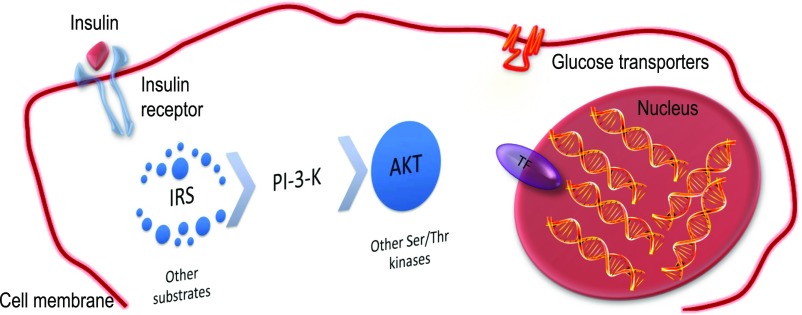Figure 1.
Shifting focus in insulin action research. Insulin acts through a single cell surface receptor, activating its tyrosine phosphorylation. This signal is converted through adaptor proteins (Irs) into a lipid phosphorylation signal (PI-3-kinase), which is then engaged to activate a subset of serine-threonine kinases, the most important of which is Akt. This leads to various biologic effects, including translocation of glucose transporters and inactivation of Foxo. TF, transcription factor.

